I have found the Swiss Army Knife of tree species: the stinking toe, also known as West Indian Locust.
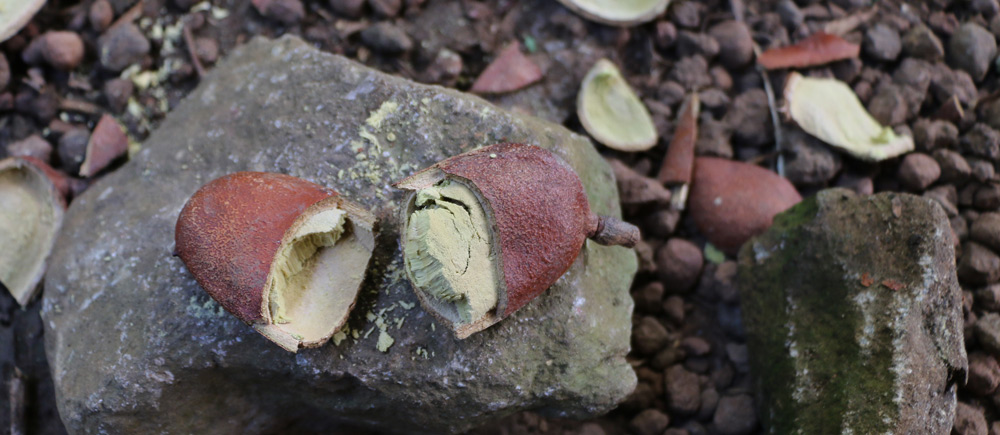
This tree has an unfortunate common name due to the earthy aroma of its pods.
Really, they smell nothing like a “stinking toe” – they’re not even unpleasant. Sort of sweet and musty, perhaps. The scent is hard to describe but it certainly does not merit the moniker “stinking toe.”
That’s just a mean way to name one of the most useful trees you’re likely to encounter. Stinking toe also gets rather large.
Uses for Stinking Toe / West Indian Locust
West Indian Locust is supposedly a nitrogen-fixer, though reports are mixed.
According to James A. Duke:
“…the wood can be used as firewood (density 750–1050 kg/m3) the pods for alcohol generation, but there is some question as to whether this is an important nitrogen-fixing tree. Isolated from nodules on a large Hawaian specimen reacted like a typical cowpea rhizobium. Large rough-surfaced nodules were observed on 10 of 15 Philippine specimens. In Trinidad, nodulated specimens were not found (Allen and Allen, 1981).”
Duke also writes:
“Important timber tree, used for furniture, (sometimes compared with mahogany), carpentry, general construction, wheels and cogs, dugouts, shipbuilding, crossties, posts, looms, cartwheels, etc. The wood should be attractive for cabinet work, interior trim, plywood, turnery, and veneer. Indians made canoes from the smooth, hard, thick bark by stripping in one piece the bark of a large tree, sewing the ends together, waterproofing the seams with gum or resin, and inserting wooden crosspieces. The roots and trunk yield a pale yellow or reddish resinlike gum known commercially as South American copal. The gum exudes and forms hard lumps which become buried in the soil at the base of a tree. Sometimes as much as a barrel of gum has been found around the roots of a large tree or at the site of a former tree. The gum is used mainly in varnish but also for incense and local medicines (Little and Wadsworth, 1964). The copal is also used for patent leather and in stains for tin ware (Uphof, 1968).”
Stinking Toe and its Marvelous Fruit
When my neighbor brought some pods to share last week and I got to try them, I had to share the experience on film:
They’re really quite good and my children ate the rest of the pods as soon as I finished filming. They’re like little West Indian Locusts themselves. Hehheh.
On the ediblity, Useful Tropical Plants reports:
“Fruit – raw or cooked[301]. The dry, whitish-yellow pulp around the seed has a sweet flavour and is commonly eaten raw; used in making custards and ice cream; and fermented into an alcoholic beverage[301]. It is eaten like sweets by children in Jamaica[301]. The protein content is high for a fruit[301]. The pulp contains 3.2% sugar, 1.1% fat, and 35.8% crude fibre[303]. It has its own peculiar smell and sweet flavour, slightly reminiscent of bananas, and is generally considered pleasant but not very attractive[303]. The texture is that of dry flour turning to a paste in the mouth, and some people find this unpleasant[303]. It is very dry and largely starchy, so it is a good source of calories[303]. The fruit is an indehiscent oblong pod, 5 – 15cm long and 3-5cm wide, containing 3 – 4 large seeds[303, 791]. A tea made from the bark is a quite popular drink for lumberjacks working in the forests in Brazil, because it is a natural energy tonic[303].”
And FAO states:
“The jatobá fruits prolifically, although yield estimates could not be found. Very roughly, it is estimated that a mature (10-year-old) tree grown in the open may yield 1,000-2,000 fruit, each weighing about 50 g; hence one tree yields 50-100 kg of fresh fruit each year (@100 trees/ha = 5-10 MT). Most of the fruit is composed of the pod (probably 50-70%), and seed (25-40%), so there is very little floury mesocarp (5-10%). Thus, one tree may yield 2.5-10 kg of flour (250 kg to 1 MT/ha/yr). On most of the poor soils of Amazônia the lower estimates are more likely or may even be high.”
Infogalactic has even more information on the edible pods of stinking toe:
“The fruit were a major food for the indigenous population. The smell is not considered unpleasant by those who eat it. The pulp inside the hard shell appears like miniature soluble fibers that dissolve easily in water or milk, which it thickens. Some like to add sugar for more sweetness, and if eaten raw it can tend to stick in the mouth like dry dust.
It is one of the richest vegetable foods known because of its high concentration of starches and proteins.[8]
The pulp, in spite of it somewhat disagreeable smell, is of a sweet taste, is eaten raw, is also dried and transformed into powder to be incorporated in cookies (or crackers) and soups, or is mixed with water to prepare a drink, called atole. It can also be a first-rate concentrate feed for animals.”
From seed, West Indian Locust is reported to take 6-10 years to bear pods. The tree can grow in shade but does the best in full sun.
This is the tree from which amber reportedly fossilizes, so without the stinking toe tree, there would be no Jurassic Park.
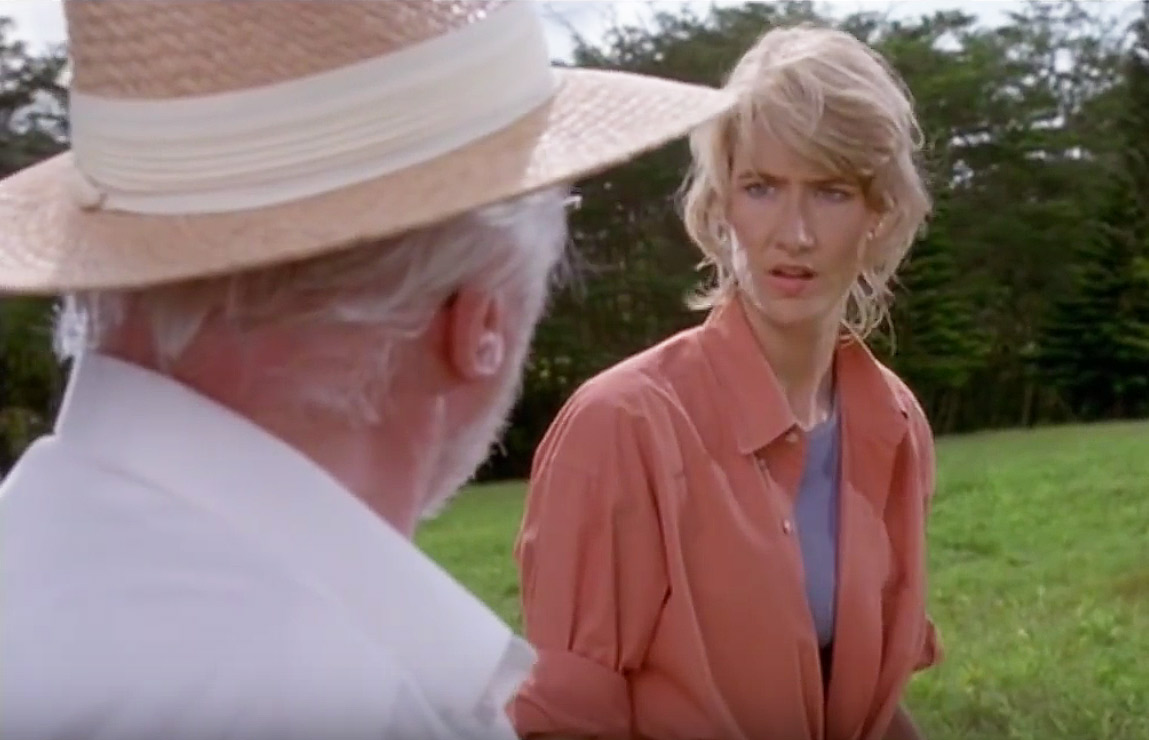
Yes, Miss Sattler – you heard me right. Is there anything this tree can’t do?
Oh – and one more thing – the seeds are often made into artwork:
“In Costa Rica the seeds are known as “guapinol” and are made into polished hardwood pendants. The dark brown coat is sanded off on one side and the smooth ivorylike inner surface is painted with a colorful country scene.” (source)
Wayne’s Word has a nice picture here.
I planted seeds this last weekend and will post an update when they germinate.
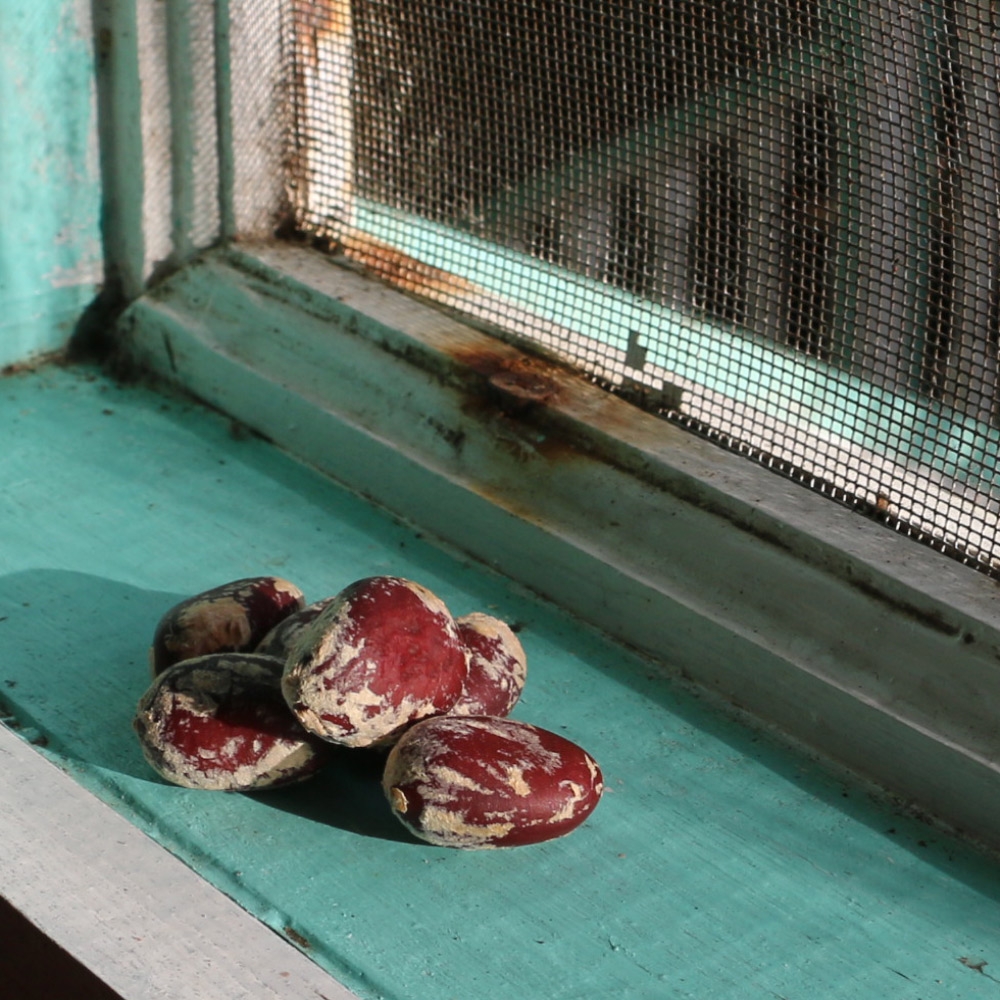
I don’t know that I’ll be painting on any of them, as I hate to waste a single one! Maybe later when I’m harvesting buckets of pods.
Finally, stinking toe may grow all the way into zone 9, so if you’re in South Florida, on the coast in one of the Confederate states, or in Southern California, this tree would likely be worth planting.
SPUDOMETER RATING:

Name: Stinking Toe, West Indian Locust, Brazilian copal
Latin Name: Hymenaea courbaril
Type: Large tree
Nitrogen Fixer: Most likely
Medicinal: Yes
Cold-hardy: No
Exposure: Full sun/part shade
Part Used: Sap, bark, wood, edible pods, seeds carved and painted
Propagation: Seed
Taste: Good
Method of preparation: Edible pith in pods can be eaten dry or mixed into drinks and confections
Storability: Unknown
Ease of growing: Easy in tropical climates
Nutrition: High
Recognizability: Low
Availability: Low

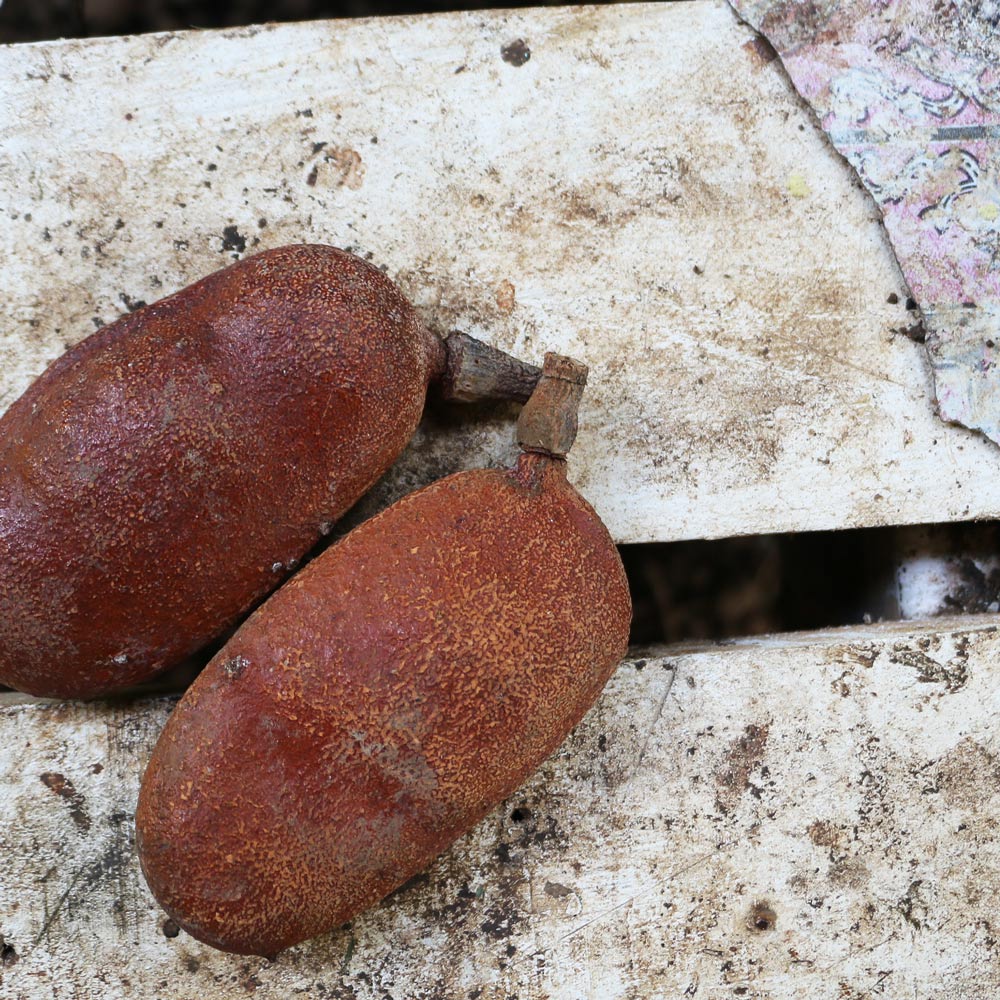
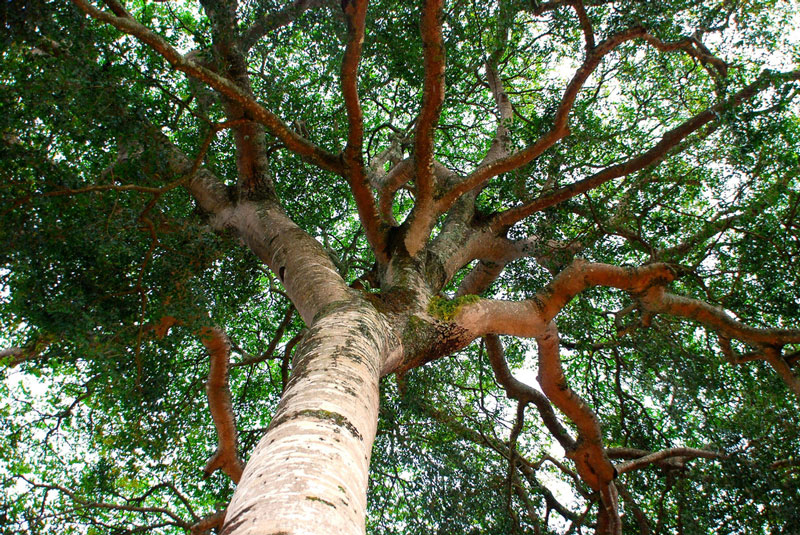
7 comments
here in Grenada, the stinking toe pods are being sold in the local market. I enjoyed eating these during my school years. It has been ages since I had one. I will have to get a few to eat and make a fermented drink. Thanks for the information and the picture of the tree. I have to collect some of the seeds to make a necklace/choker.
Hi David!
I brought a whole bunch of these seeds to Orlando because they remind me so much of my childhood. I am now ready to plant them but I am unaware of the germination process it how long it takes. Could you help me?
Nick them with a file to show the white inside, then soak overnight, then plant. They should be up in a couple of weeks.
David, thank you for being my go-to resource. We didn’t know how to germinate these seeds. You are making a positive impact on the world and a greener place for our children with your work.
Thank you, Teresa – I appreciate it. Glad to help.
I think you’d also enjoy growing Paw Paw trees in your warm climate! They grow wild throughout the south. The seeds must be kept fresh & living, from a fresh fruit in order to be viable.
Ever think about expanding your plant profiles to other hardiness zones? We live in the Pacific Northwest, and while many wonderful plants grow here, We’d love to learn more about other Survival plants acclimated to our zone.
Thanks for all you do!
I don’t know if they’d get enough chill hours in the tropics. Since this post I have moved to Alabama and I have a bunch of pawpaw seeds stratifying in the fridge for planting in the spring. They are wonderful.
I have not expanded the plant profiles much past Florida since that is my main area of gardening experience. I also write about Tennessee and the tropics, since I lived in both regions. If I were to cover other areas it would only be through second-hand knowledge.
Comments are closed.